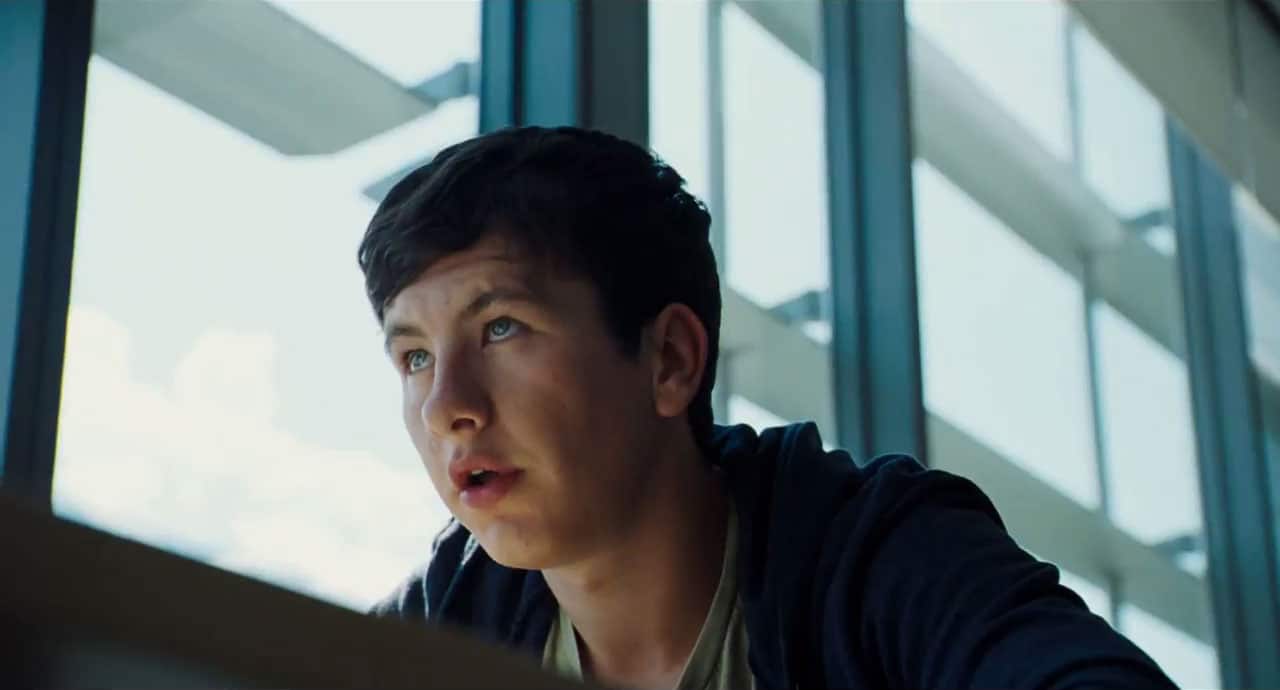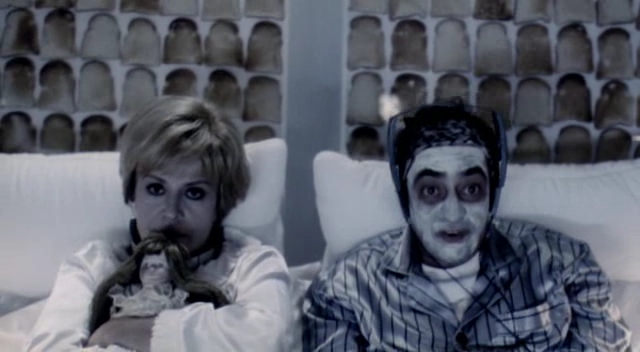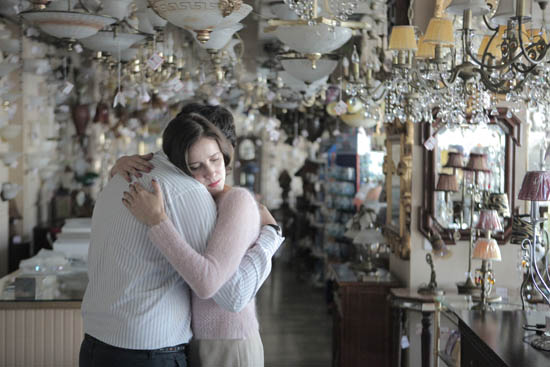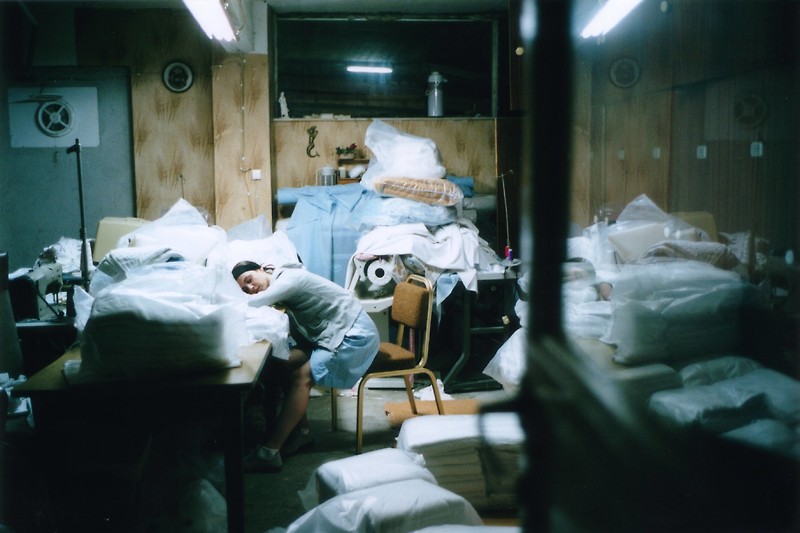
“Me, personally, what I want is to allow people to be engaged actively in watching the film. I like to construct films in a way that makes you feel a bit uncomfortable, [but so you’ll still] be able to enjoy them, be intrigued [and] start to think about the meaning of things – and hopefully by the end of it, you’ll have some strong desire to keep thinking about them.”
– Yorgos Lanthimos
From lesbian queens, to imprisoned offspring, to dystopian relationships, the films of Yorgos Lanthimos exhibit tremendous variety, and defy traditional generic classification. Not being familiar with his work, one might think that Dogtooth and The Favourite were directed by different people, given the dissimilarity in their geography, and in their stylistic and thematic concerns.
However, what binds Lanthimos’s films together is his on-going interest in communities, his love of human flaws, naïve dialogue, jet-black humour, an atmosphere of surrealism, and an ongoing commitment to experimentation and improvement. Lanthimos works from instinct, and often subverts or ignores genre altogether. Instead, he creates films that are human science experiments that are drawn from imagining the possibilities and effects of a hyper-real, often dystopian concept.
The start of 2019 saw the release of the Greek auteur’s most recent feature, The Favourite, which stars Rachel Weisz, Olivia Colman and Emma Stone. In addition to the acclaim it has earned for its all-female lead performances, the film has subsequently garnered ten Academy Award nominations. Lanthimos has previously received nominations in the categories of Best Foreign Language Film, for Dogtooth, and Best Original Screenplay, for The Lobster, however, The Favourite marks his first nomination in the Best Director category.
Yorgos Lanthimos was born in 1973 in Athens, Greece. He was raised by his mother, who died when he was seventeen. As a child, his early cinematic influences, included, somewhat surprisingly, Back To The Future and the films of Bruce Lee. Later, during his study at the Hellenic Cinema and Television School Stavrakos, he became enamoured with the works of Andrei Tarkovsky, Robert Bresson and John Cassavetes.
Lanthimos began directing in 1995, starting with TV adverts, music videos, short films, and theatre productions. In 2001, he co-directed My Best Friend with Lakis Lazopoulos. In 2004, he was part of the creative team behind the opening and closing ceremonies of the Athens Olympics. Then, in 2005, he graduated to writing and directing his first solo feature, entitled Kinetta.
Thematically, Lanthimos’s films often deal with individuals struggling beneath the control of a perverse, morally-abhorrent system or institution. Though his films have fantastical premises, Lanthimos’s astute focus on the actors’ performances ground his characters to a level of profound humanity. The tone of his films sit on a precarious see-saw between absurdist comedy and horrific tragedy, engrossing his audiences in a variety of conflicting emotions, and provoking in them intellectual speculation.
His unabashed self-confidence, his bold stylistic idiosyncrasies, and the contemporary relevance of his sociological, political and psychological allusions, make Lanthimos one of the most fascinating directors of the twenty-first century. With ease, he has merged the intellectualism and eccentricity of the European Avant-Garde in to the appraisal of the modern mainstream.
Perhaps Lanthimos’s greatest gift is his talent for writing. His scripts are thought-provoking, farcical allegories, that echo the absurdism of Samuel Beckett. They offer audiences a unique and fresh brand of humour, as well as imparting important existential ideas. These provoking them to draw their own parallels in the turbulent, frightening atmosphere of the world around them. Lanthimos’s films draw wide connotations and allow for endless interpretations, due, in part, to his penchant for ambiguous endings.
Lanthimos empowers his audience-members by example of his protagonists, and how they deal with their circumstances. For example, in The Lobster, Colin Farrell’s David shows us the possibilities of thinking for oneself and choosing one’s own destiny, though both eventualities prove to be testing. Lanthimos’s films force the audience-member to question whether they too are abiding an oppressive system in real-life. ‘Is it better to escape, or to keep toeing the line?’ Lanthimos helps us see our own fork in the road.
This article is for those new to or interested in the work of Yorgos Lanthimos, as well as for fans wishing to explore his back-catalogue. For those unfamiliar with the director, this article will provide you with a starting-point for discovery. If you visit Lanthimos’s official website, you will find galleries of his personal photography, as well as further information.
7. My Best Friend (2001)

My Best Friend is Lanthimos’ first feature, and follows Konstadinos, (played by Lakis Lazopoulos), a dreary middle-aged man who returns home from a missed flight, only to find his wife in bed with his best friend. He then embarks on a Quixotic ramble around Athens, attempting, haphazardly, to come to terms with the incident.
Though none of Lanthimos’s films can be described as ‘bad,’ the Greek-language comedy My Best Friend sits at the bottom of the list, chiefly because Lanthimos only served as co-director, and therefore it is the title least indicative of his work.
That said, the film show-cases several elements that would later become synonymous with Lanthimos’s style, such as a strongly-acted ensemble cast and an experimental use of camerawork. Moreover, the strong presence of surrealism throughout is clearly a technique Lanthimos has drawn in to his subsequent works.
My Best Friend is worth watching for its irreverent, black humour, specifically the comedic dejection that Lazopoulos expertly evokes in Konstadinos. However, the cinematography, though daring and ever-surprising, often makes it difficult to connect emotionally with the characters, despite the pathos of Lazopoulos’s script.
6. Alps (2011)

Alps is Lanthimos’ third solo feature, and his follow-up release after winning Un Certain Regard for Dogtooth at Cannes in 2009. It too is in the Greek language.
Roger Ebert described the film as “peculiar beyond all understanding, based on a premise that begs belief.” It is about a small group of therapists who are call the ‘Alps.’ Like Reservoir Dogs, each member is a assigned a codename. Instead of colours, their names are based upon mountains in the Alps. The therapist’s rank can be deduced by this codename: more senior members have names of the highest mountains, such as Mont Blanc.
The Alps imitate dead people for those who have lost a loved one. The protagonist is a Nurse played by Angeliki Papoulia. On one assignment, she acts as a middle-aged man’s deceased wife. She later finds herself contractually obligated to have sex with him. This sends her on an unhealthy course of compulsive copulation.
When a fellow therapist, the ‘Gymnast,’ played by Ariane Labed, tries to hang herself because of her coach’s decisions, the Nurse has sex with the coach to persuade him to change his mind. On her next assignment in a family house, the Nurse develops a passionate affection for a couple’s teenage son. Fuelled by addiction and delirium, her behaviour grows increasingly more desperate and erratic, leading her to even make a sexual advance on her own father.
Alps bears a strong resemblance to Dogtooth, provoking critics at the time of its release to note its inferiority, and speculate whether Lanthimos has only one formula for narrative. This is perhaps attributable to its study of sexual perversion evolving out of under the constraints of a suppressive regime. What Alps lacks, in comparison to Doogtooth, is a focus for its strange tone and choices of mise-en-scéne.
Due to the sometimes jarring editing, it is often difficult to fully grasp what is happening in the narrative. A number of the scenes go on for what seems like too long to quantify often aimless dialogue, filled with a plethora of pop-culture references.
Some of their characters appear not to have earned their place in the film. However, in its second half, the film focuses more closely upon the nurse, and begins to satisfy, with a cause-and-effect chronology that charters the spiralling sex-addiction of the Nurse, with both comedy and tragedy.
This is a film that will satisfy devoted Lanthimos fans, but will leave some confused and dissatisfied. Ultimately, Alps marks Lanthimos’s transition from the winning experimentalism of Dogtooth in to the more conventional narrative structures of his later work. Pay close attention to Papoulia’s perforance, for though it is not always clear, it it her character arc that illustrates the dramatic purpose of the film.
5. Kinetta (2005)

A man with a beard in a black suit stands beside an up-turned car on an empty road. He removes the tape on the stereo inside the car, the camera scanning past the feet of a dead body. Next we find him at a cemetery, staring at a grave and listening to his headphones. A tracking-shot of him from a vehicle passing the cemetery invokes a certain shade of eeriness, unseen in any other film. The man sets off down a busy highway, still listening to his headphones. This is how the Kinetta opens.
This title was Lanthimos’s first solo feature, made on a micro-budget. D.O.P. Thimios Bakatakis employs shaky hand-held camera work to track three strangers, who bond by reenacting scenes of women who have been killed by a local serial-killer. They later descend in to disagreement. It is set in a Greek beach resort during the off-season.
The film demonstrates Lanthimos’s articulate blend of naturalism and surrealism, even at this early stage in his career. The candour of its performances leads the audiences to more closely observe and interpret the unusual lives of these characters. With evident influence from Tarkovsky, Lanthimos evades narrative conventions artfully. Instead, he invites audiences to indulge in the subtle, and often strange poetry that exists in the stillness of his scenes.
This film is evidently the director’s most personal effort in the canon. In this film, more than any other on the list, Lanthimos is inviting you deep in to his psyche. His memories, fantasies and sentiments are woven together in another fascinating study in unusual human behaviour. But, once again, Kinetta’s ambiguous meaning and jerky cinematography often makes it difficult to enjoy beyond an artistic plain.